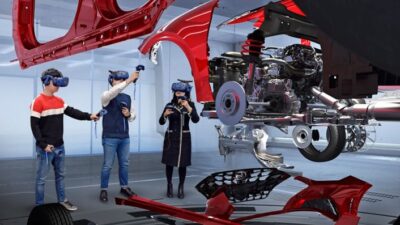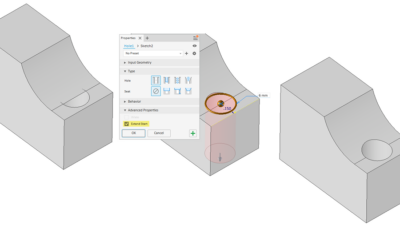NVIDIA Omniverse aims to unite the 3D world on an RTX foundation.
Dell has sponsored this post.
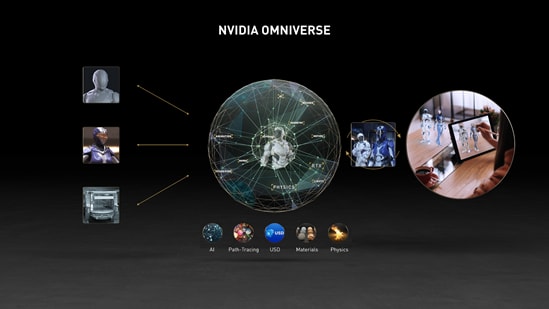
If you’ve seen the word NVIDIA anywhere lately, you’ve probably seen the word Omniverse somewhere close by. NVIDIA Omniverse is a new software platform from the graphics card juggernaut—one which is so broad in scope and so extensible that Universe wasn’t a big enough word to describe it.
But how do you describe it? NVIDIA’s elevator pitch goes something like this:
Omniverse is a software platform for collaboration and simulation targeted at anyone working in 3D.
NVIDIA realizes this is a broad pitch. The company estimates that there are 16 million 3D designers and digital content creation (DCC) users out there who could potentially benefit from the new software. The biggest chunk by far is the 11 million 3D users in manufacturing.
What do these millions of users have in common, and what can Omniverse do for them? We spoke with NVIDIA’s Michael Geyer, Omniverse product manager for the manufacturing industry, to learn more about the new platform.
More 3D, More Problems
Computer graphics have come a long way in the last 50 years. In fact, computer graphics have come a long way in the last five years. One of the more recent milestones was the introduction of real-time ray tracing, which NVIDIA debuted in 2018 with its RTX lineup of graphics cards. NVIDIA CEO Jensen Huang believed it was the company’s “most important innovation in computer graphics in more than a decade.”
But it’s not all beautifully rendered sunshine and photorealistic roses. As 3D content gets more complex, we run into new challenges. Challenges like data gravity, an evocative term from the IT world that points to the increasing size of datasets (3D or otherwise) and the difficulties of moving said data. Or challenges like an abundance of disparate 3D tools, forcing linear workflows and exposing users to the hiccups of imports and exports and incompatibility. Or even just the challenge of accessing hardware that’s powerful enough to do 3D work in a reasonable amount of time.
“Working in 3D is incredibly complex and it’s essential for nearly every industry,” Geyer stressed. “There are a large number of people that need to work on the teams. They all use many different pieces of software, and the scale and complexity of systems that need to be modeled and simulated in 3D is growing at an almost exponential rate.”
Omniverse is NVIDIA’s answer to these challenges—challenges which it has faced itself as a producer of 3D data and manufacturer of graphics cards. In fact, Omniverse began as an in-house tool to cope with the growing complexity of NVIDIA’s own 3D workflows.
“One of the most common questions we get is why NVIDIA, a high power compute and graphics processing and AI company, is developing this extensible software platform,” Geyer said. “It’s similar to how Amazon decided to go to market with Amazon Web Services. They built a bunch of stuff for themselves to support the retail business and then realized it could be useful for the rest of the world.”
What is NVIDIA Omniverse?
There are two important things to understand about Omniverse. The first is that, unsurprisingly, the platform takes every advantage of NVIDIA’s graphics hardware. Omniverse was architected from the ground up to maximize GPU compute, whether a single mobile GPU like the NVIDIA RTX A5000 in a Dell Precision mobile workstation, or multiple full-size GPUs like two NVIDIA RTX A6000s in a Precision 7920 tower workstation, or even a dozen server-grade NVIDIA A40 GPUs in Dell PowerEdge servers in a datacenter. An NVIDIA RTX graphics card is required for full functionality of Omniverse.
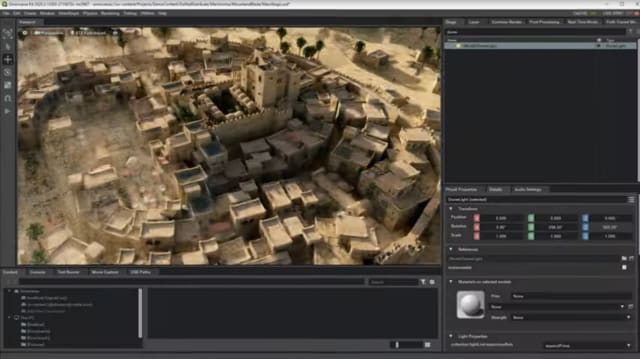
The second thing to understand about NVIDIA Omniverse is that it is not a single, fixed, black box of a software platform. The entire platform is essentially extensible, according to Geyer, with APIs playing a crucial role.
“We think of Omniverse as an emergent system, in that it’s a toolkit, and the market is ultimately going to determine how they use it,” he explained.
Geyer provided the example of one of Omniverse’s early enterprise beta testers, Volvo Cars, which used the platform during the development of one of its vehicles. In the screenshot below, you can see the 3D model has been pulled into Omniverse from its origins in CATIA (note the quality of the rendering; that is thanks to real-time ray tracing on RTX GPUs):

The other element of this screenshot that sticks out is the web interface on the bottom left. That is the extensibility of Omniverse in action: Volvo Cars developed an in-house connection to their PLM system, Siemens Teamcenter, in order to control product variance in Omniverse. For instance, switching the region to England will automatically move the car’s drive system to the right side of the vehicle.
“This is really exciting because we’re tapping into PLM and using that intelligence to drive a high-fidelity visual model of the vehicle,” Geyer said.
The Five Pillars of NVIDIA Omniverse
There are five foundational components to the Omniverse platform: Nucleus, Connect, Kit, Simulation and RTX Renderer.

Nucleus is the heart of it all, the file server that coordinates all Omniverse services and applications and enables the development of new microservices on top of the platform. Individuals can set up a Nucleus Workstation server on a mobile or fixed workstation, while enterprises can install the Nucleus Enterprise server on-prem on a blade server or within a private cloud. Nucleus servers do not require a GPU. Nucleus is built around Universal Scene Description (USD), an open-source framework for composing 3D data that was originally developed by Pixar for their animated films and that is now starting to gain a toehold in other 3D-heavy industries. NVIDIA considers USD to be the HTML of 3D virtual worlds.
Connect is the portal between Omniverse and the myriad other 3D tools out on the market, from engineering tools such as McNeel & Associates Rhino and Autodesk Revit to M&E tools such as Epic Games Unreal Engine, Autodesk 3ds Max and Maya, and many more on the way. Connectors (Omniverse’s term for plug-ins) link these third-party 3D tools to Omniverse and allow real-time updates from one to the other. Most Connectors are currently one-way (a change in Revit will immediately propagate to Omniverse) but a few are bidirectional (a change in Omniverse will translate back to Bentley Systems MicroStation).
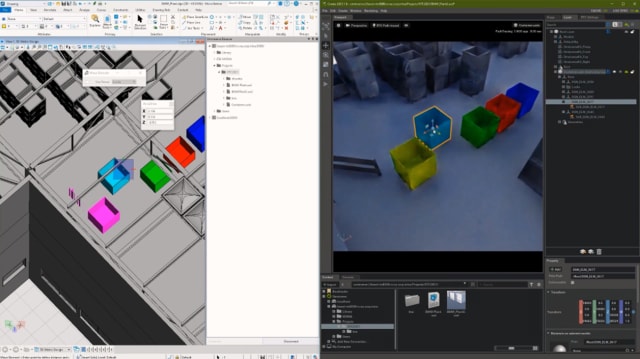
“A Connector provides a dynamic link from an authoring tool into the Omniverse world,” Geyer explained. “We want people to keep using their [current] tools like Onshape and Rhino, but we want to also enhance those tools with this amazing suite of SDK capabilities that NVIDIA has developed over the years to do things like AI reinforcement training, domain randomization, robotics simulation, physics, path tracing, digital humans and materials.”
The third pillar of Omniverse, Kit, allows developers to write their own tools on top of Omniverse using Python or C++. The fourth pillar, Simulation, comprises all of NVIDIA’s physics simulation technology, including PhysX, Flow, Blast and more. Finally, the Omniverse RTX Renderer does what it says on the tin and provides RTX’s signature real-time ray tracing and referenced path tracing to render Omniverse scenes.
The BMW Factory: How Do We Do This?
At NVIDIA’s annual GTC conference earlier this year, CEO Jensen Huang teamed up with BMW Group’s Milan Nedeljkovic to show off how the automaker was using Omniverse to develop a digital twin of one of its factories. “For the first time, we are able to have our entire factory in simulation,” Nedeljkovic said at the time.
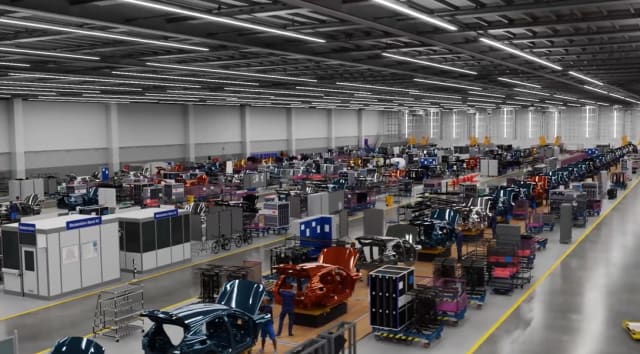
The keynote demonstration showed off how BMW could use Omniverse to design and reconfigure its factories, optimize line designs, train and deploy industrial robots and more. “These new innovations will reduce the planning times, improve flexibility and precision and produce 30 percent more efficient planning processes,” Nedeljkovic concluded.
“This BMW demo got a ton of interest, and we’re talking to three or four customers a day about this thing because they want to know ‘how do we do this?’” Geyer said. He was careful to note, however, that while the vision presented during the GTC keynote is where Omniverse is headed, the software has some development left to go.

“We’re working on the roadmap to make that a scalable reality and working with a number of customers today that are implementing different pieces of it,” Geyer promised.
The Omniverse Begins with a Big Beta
NVIDIA Omniverse can be a lot to take in (they didn’t call it Omniverse for nothing) but the crux of the new platform is that it offers a space to unify disparate 3D assets, simulate their behavior and collaborate in real-time. You can even build entire virtual worlds in Omniverse, and NVIDIA does just that in order to train its autonomous vehicle systems. Omniverse shares some similarities with game engine software, though Geyer believes it goes much further in its capabilities for AI, ray tracing and scalable GPU compute than these existing solutions.
NVIDIA Omniverse for individuals is currently available in open beta for free download. NVIDIA Omniverse Enterprise, a fully tested, optimized, and supported enterprise-ready platform, will be commercially available later this year. Today, you can join the thousands of individuals and hundreds of organizations who are evaluating Omniverse’s open beta. According to Geyer, the reception has been extremely positive across industries.
“Since we went into open beta in December, there have been many, many companies that do design engineering and manufacturing who are using it,” Geyer said. “We see everything from early concept evaluation, design reviews, supplier collaboration, factory and robotics, sales and marketing.”
To learn more about NVIDIA Omniverse, visit nvidia.com/omniverse. For more information on workstation hardware that’s Omniverse-ready, check out Dell Precision workstations.
